From Pay-to-Play to Play-to-Earn
March 2022. Reading Time: 10 Minutes. Author: Himank Agrawal.
Introduction
Gaming is an integral part of human life that starts at an early age as toddlers and children play games to prepare for life. Playing games for leisure, however, has become only prominent as agricultural and technological revolutions made life less hard and gave us more free time.
The game Go has been referenced in Chinese literature as early as 548 BC, although it likely is much older. As the technology evolved, games moved from tables to screens, and most recently from consoles to the blockchain.
In this article, we will explore the evolution of gaming over the last few decades.
Snapshot of the Global Gaming Industry
Gaming has become an industry with a market size of $180 billion. The growth has been cyclical between 1970 and 1995, but thereafter the global gaming market grew relatively consistently.
It is worth highlighting that the gaming market is considered the fastest growing form of entertainment globally and has become larger than the movies business.
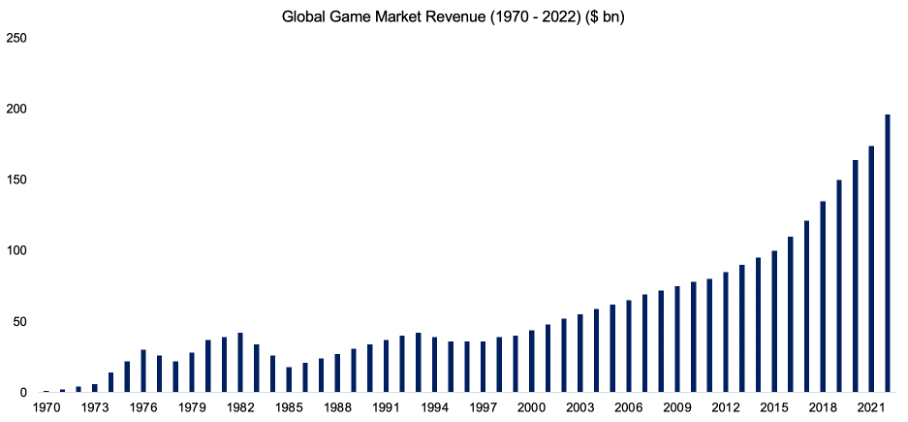
Source: Gamingscan
Evolution of Gaming
Gaming has evolved dramatically over the years and games have consistently become more pocket friendly, which leads to increased adoption of games. The evolution can be broadly categorized in the following five phases:
- Buy software: Consumer goes to a shop and buys a game for a price. The game developer has highly cyclical revenues that peak with new game launches.
- Rent software: Consumer rents a game, which makes it more affordable. The game developer has more stable revenues given steady subscriptions.
- Free-to-play: Consumer plays the game without paying anything upfront, but tends to purchase items like weapons within the game. The game developer makes money by selling in-game items or transaction fees, which are relatively stable revenues.
- Play-to-earn: Consumer plays the game with the aim of winning money or awards by beating other players. Participating in games may require upfront payments. The game developer makes money by selling access to the game or charging transaction fees.
- Blockchain-based gaming: Consumer is an integral part of the game ecosystem and blockchain is used for facilitating transactions as well as for voting to make changes to the game. The role of the game developer lessens over time as the community takes over the game development.
The diagram below outlines the evolution of gaming.
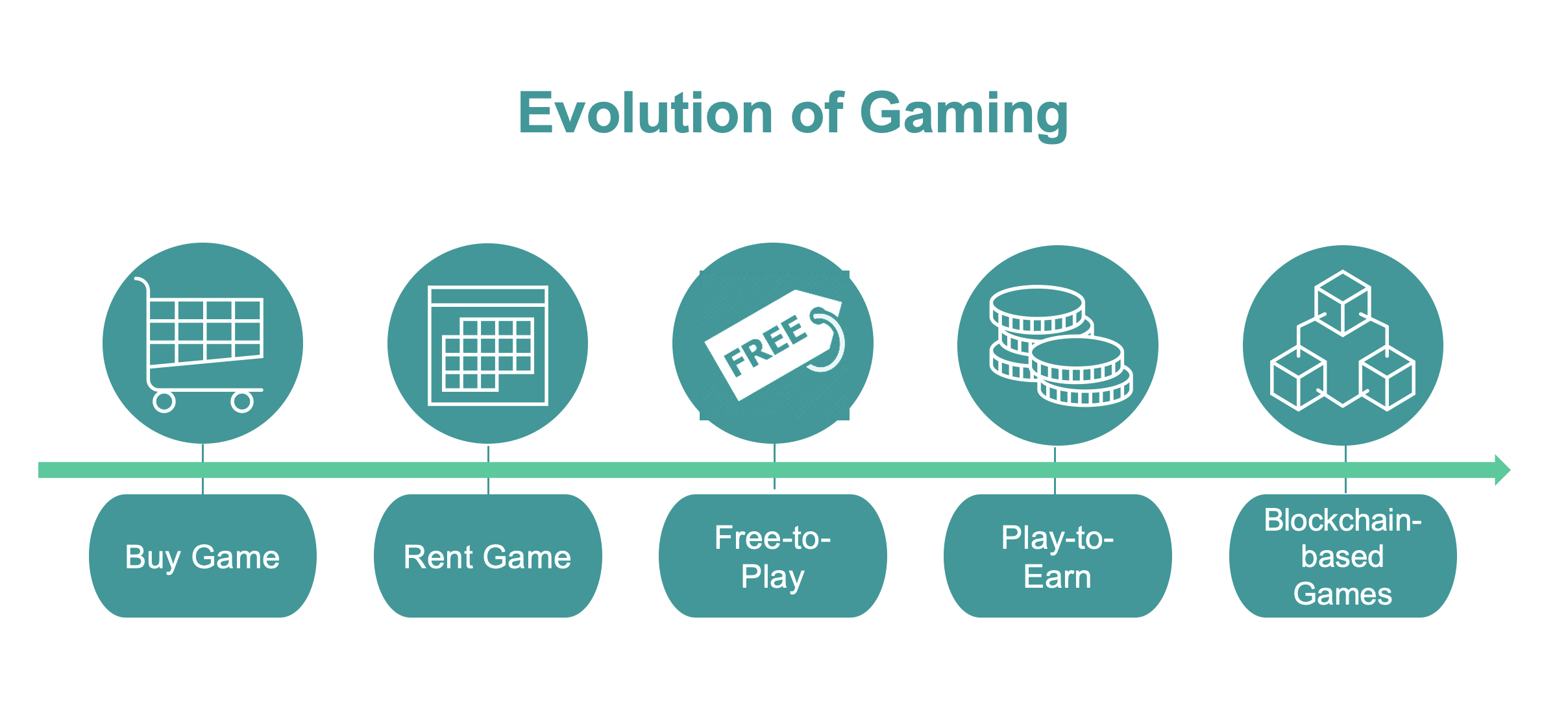
Source: Jackdaw
Analysis of Blockchain-based Gaming
With blockchain-based gaming, the dynamics of the game have changed. Traditionally, players used to buy games from the game developer and receive entertainment by spending their time in the game.
Play-to-earn is the latest gaming evolution and empowers a skilled player to make a living by playing games, similar to how a talented footballer can live off the sport.
Moreover, the gaming ecosystem has widened with the tokenization of in-game items. This tokenization aims to increase the interoperability of in-game items into other games, thus increasing the utility of in-game items and their value.
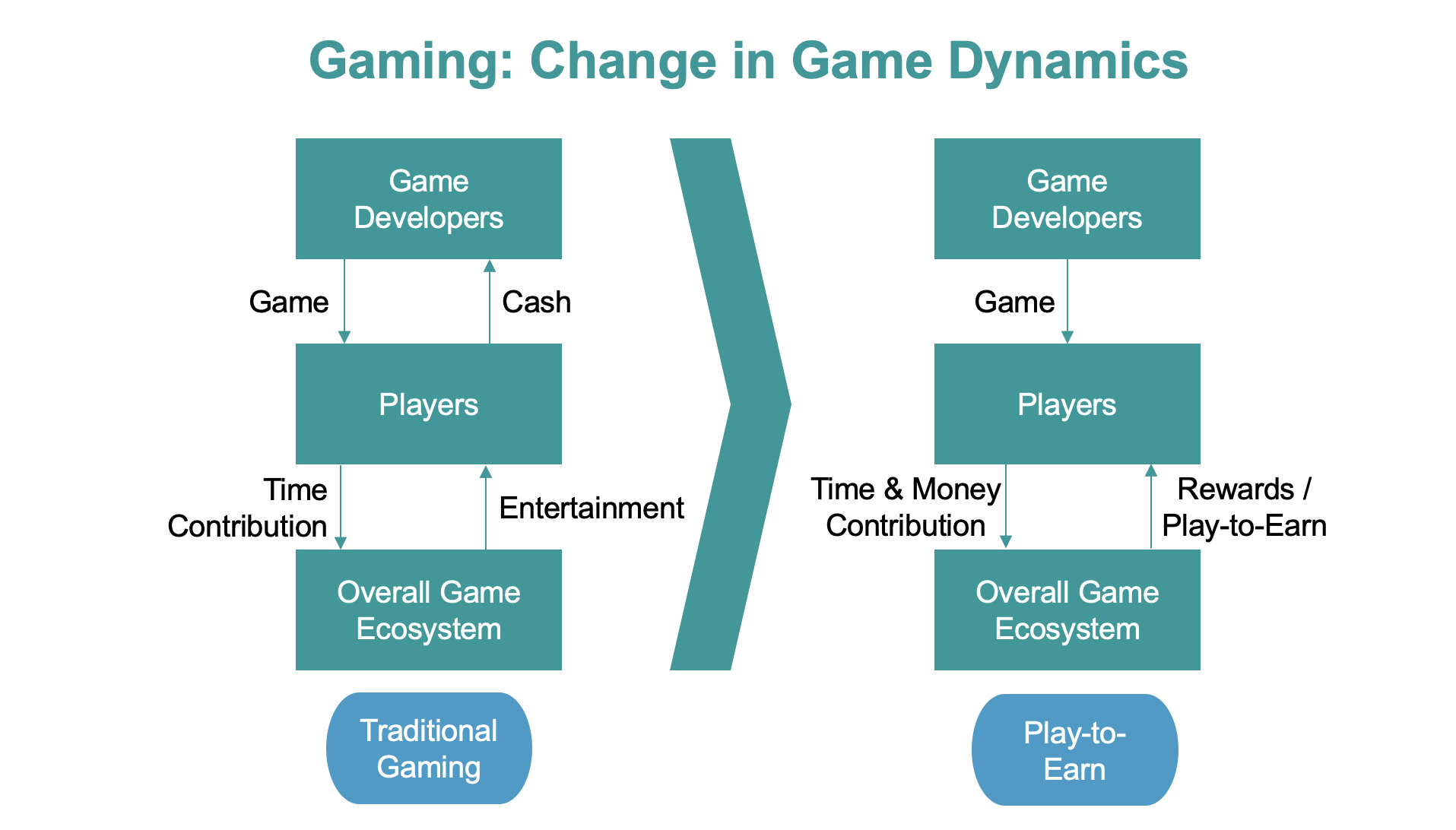
Source: Jackdaw
The most important aspect in the latest evolution of using blockchain in games is the shift from power from the game development company to its users. The gaming economies have become more inclusive wherein players and content creators share revenues and enjoy decision-making power along with the game developers, which is typically structured via a decentralized autonomous organization (DAO) for governance. The aim is to create an ecosystem that is beneficial for all the parties involved.
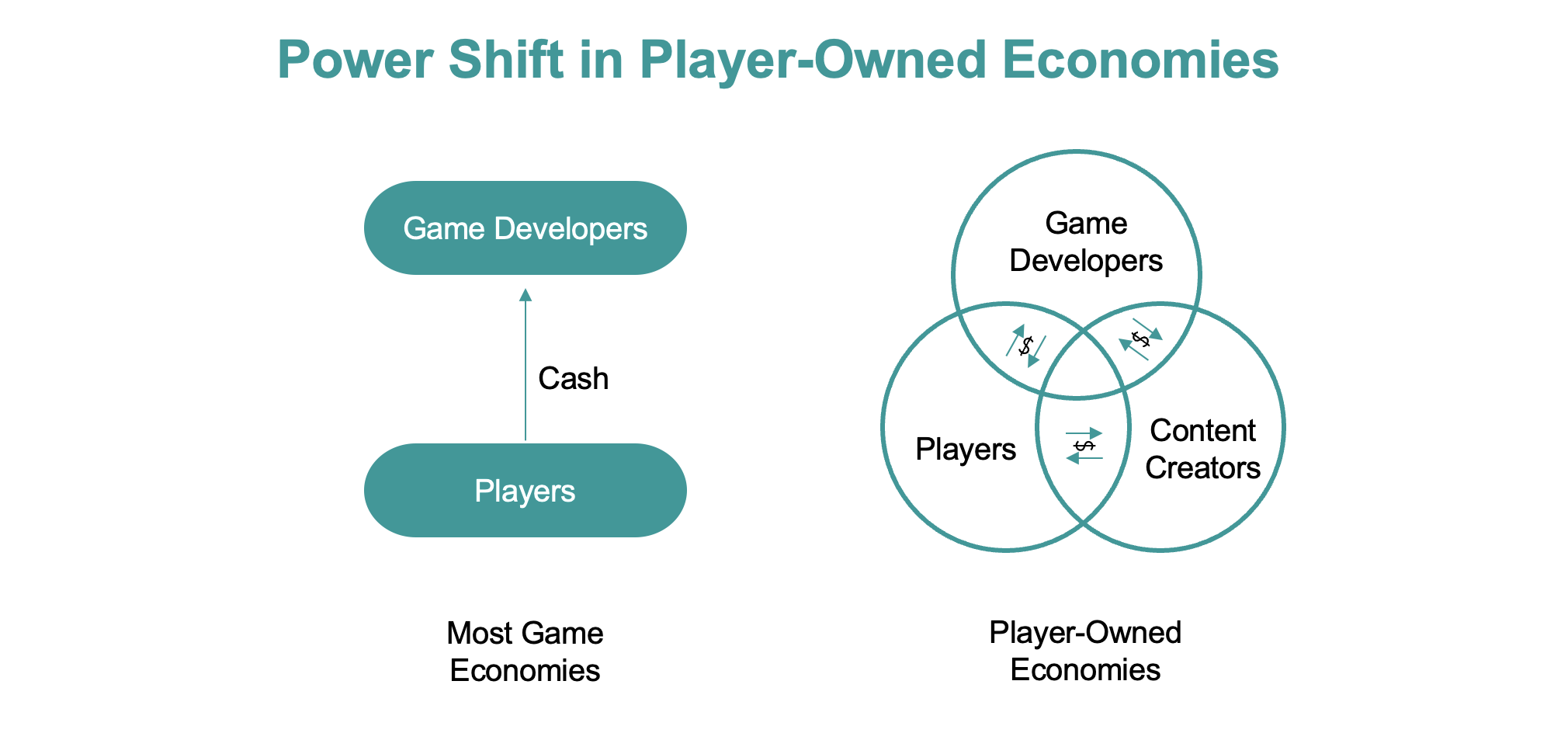
Source: Sensorium
However, the downside of blockchain-based games is the complexity as the number of parties involved has increased compared to the old way of game developers simply selling games to players via one-off transactions.
For example, guilds have emerged that select and provide funds to players that compete in play-to-earn games. Finding the right guild for a player is as challenging as finding the right players for a guild.
Managing such an ecosystem is challenging as the parties have different incentives, eg the game developer wants to maximize their revenues while the community might want to develop new features that decrease revenues.
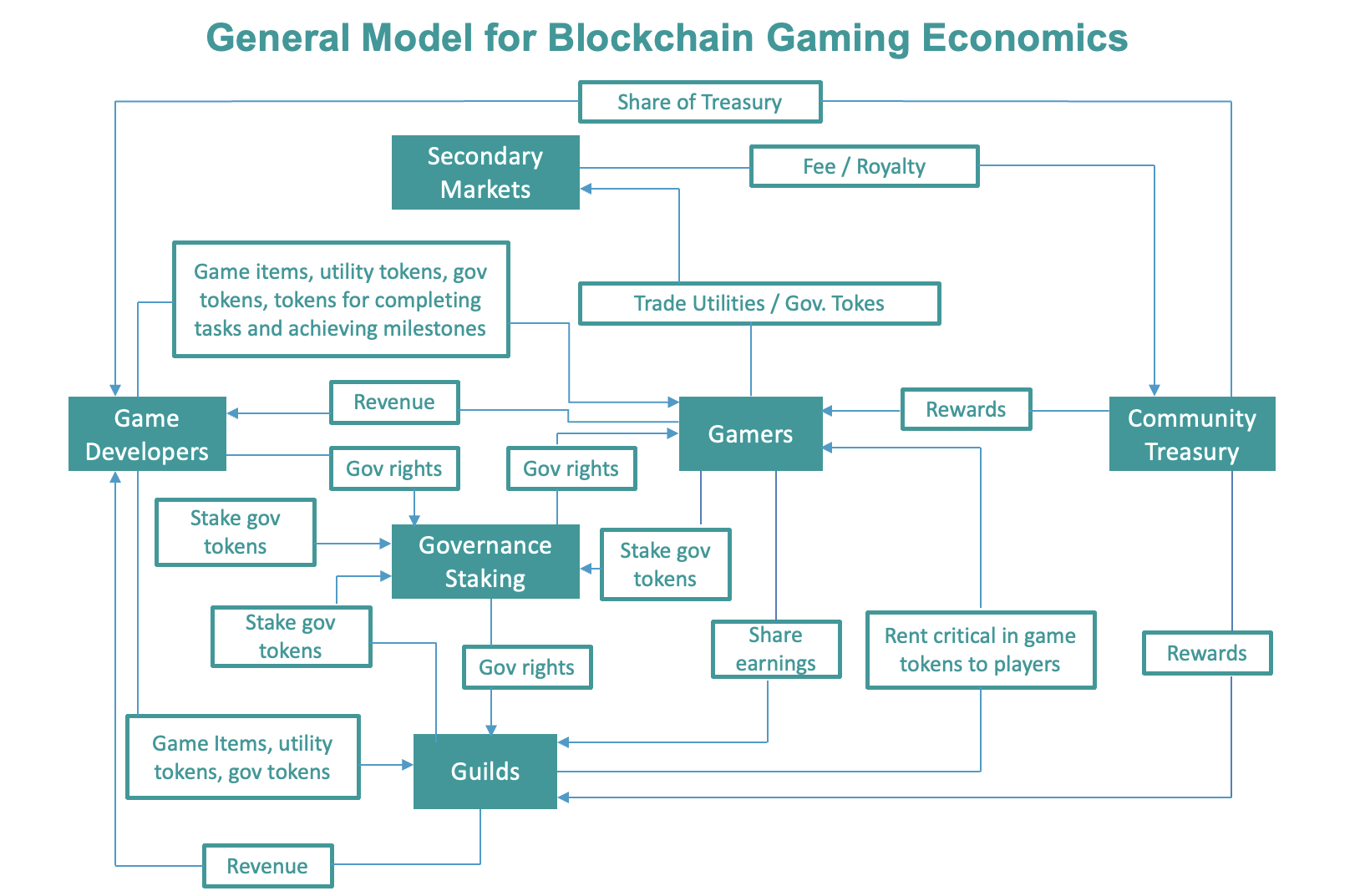
Source: The Block Research
Snapshot of the P2E industry
Play-to-earn and blockchain-based gaming are still evolving and will likely look dramatically different in five years’ time.
However, it is worth highlighting that some of the play-to-earn games have grown significantly in recent years. Alien World, Axie Infinity, Splinter Lands, and Bomb Crypto each have more than 500,000 monthly users.
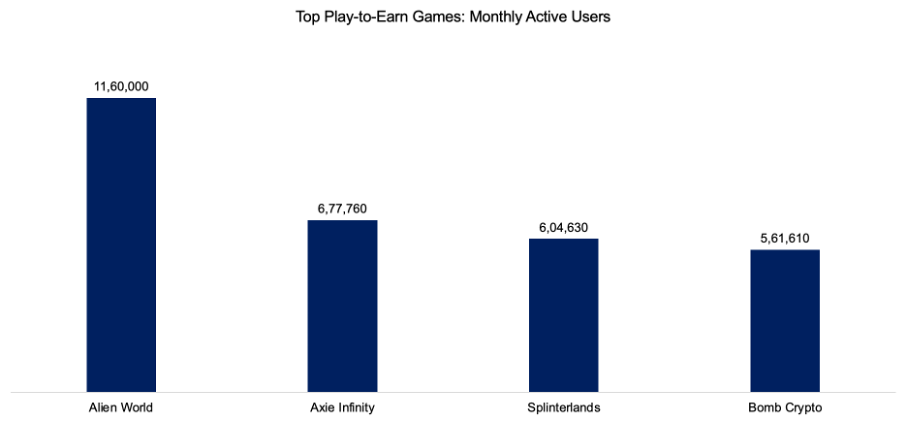
Source: Statista (10 Jan 2022)
Further Thoughts
The rapid evolution of play-to-earn and blockchain-based games are fascinating to observe and these can still be considered in their infancy. There will be many iterations of the current business models, ecosystems, and communities, where most concepts will fail and only a few will succeed, but that is simply the nature of the gaming industry and commerce in general.
About the Author

